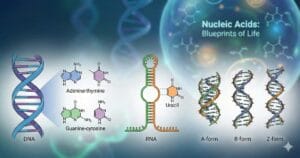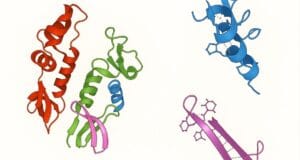
COMPETITIVE EXAM MCQs SERIES of ENVIRONMENTAL SCIENCE for UGC-NET/JRF, SLET, ARS, GATE, and other entrance tests – Environmental Pollution and Control – Noise Pollution and Control.
Syllabus Outline
- Noise measurement and assessment techniques
- National standards for noise exposure, and the effects of noise pollution on human health
- Noise pollution control and mitigation measures (e.g. engineering, administrative controls, personal protective measures).
- Noise control in transportation, industrial, and community settings.
- Environmental impact assessment for noise, noise mapping and modelling.
- Technologies and research trends in noise pollution management.
This quiz contains the concept-based most frequently asked 25 MCQs of “Environmental Pollution and Control – Noise Pollution and Control“. Each question has a single correct/most appropriate answer.
*****
1. The decibel (dB) scale is used to measure:
a) Sound Wavelength
b) Sound Frequency
c) Sound intensity
d) Excessive levels of unwanted or harmful sounds in the environment
2. Which material is commonly used for sound insulation in buildings?
a) Glass
b) Concrete
c) Metal
d) Wood
3. Which of the following is a characteristic of low-frequency noise pollution?
a) It is easily attenuated by barriers
b) It can penetrate through buildings and structures
c) It is perceived as more annoying than high-frequency noise
d) It has minimal impact on human health
4. Which noise control measure is based on the principle of active noise cancellation?
a) Sound insulation
b) Sound absorption
c) Enclosure of noisy equipment
d) Noise masking
5. How does sound intensity change with distance from the source?
a) Sound intensity decreases as the square of the distance from the source increases
b) Sound intensity increases as the square of the distance from the source increases
c) Sound intensity remains constant regardless of the distance from the source
d) Sound intensity is inversely proportional to the distance from the source
6. The process of sound absorption involves:
a) Reflecting sound waves off surfaces
b) Transmitting sound waves through materials
c) Converting sound energy into heat
d) Decreasing sound wavelength by materials
7. Why is wood commonly used for sound insulation in buildings?
a) Sound waves penetrate the porous structure of wood, causing the energy of the sound waves to be dissipated as heat through friction between the air particles and the wood fibres.
b) Wood can absorb large amounts of sound waves due to its high acoustic impedance.
c) High reflection of sound waves on polished wood surfaces reduces sound transmission through the material, thereby providing sound insulation.
d) Dry wood is a hard and dense material that tends to reflect sound waves rather than absorb them, making it more suitable for sound insulation
8. The A-weighting scale is used to:
a) Measure the frequency of sound waves
b) Adjust sound measurements to account for human hearing sensitivity
c) Determine the duration of exposure to noise
d) Assess the impact of noise on wildlife
9. The concept of noise dose refers to:
a) The intensity of a specific noise event
b) The cumulative exposure to noise over a specified period
c) The frequency of noise occurrences in a given area
d) The distance between the noise source and the receptor
10. Which of the following noise control measures is based on the principle of source modification?
a) Sound insulation
b) Sound absorption
c) Enclosure of noisy equipment
d) Traffic management
11. The Hazardous Noise Level is defined as the sound level at which:
a) Noise-induced hearing loss is likely to occur
b) Annoyance from noise becomes significant
c) Noise complaints are expected from residents
d) Occupational safety regulations are violated
12. The Speech Interference Level is a measure of:
a) The intelligibility of speech in noisy environments
b) The frequency ranges of human speech
c) The intensity of background noise in a room
d) The effectiveness of noise barriers
13. Which of the following noise control measures is based on the principle of operational control?
a) Sound insulation
b) Sound absorption
c) Enclosure of noisy equipment
d) Noise zoning
14. Which noise control measure is based on the principle of active noise reduction?
a) Sound insulation
b) Sound absorption
c) Enclosure of noisy equipment
d) Noise cancellation headphones
15. The process of psychoacoustic modelling involves:
a) Analyzing the psychological effects of noise on human behaviour
b) Predicting the impact of noise on wildlife populations
c) Simulating the perception of sound by the human auditory system
d) Modeling the propagation of sound waves in different environments
16. The Fletcher-Munson curves describe:
a) The relationship between sound pressure level and distance from the source
b) The frequency response of the human auditory system at different sound pressure levels
c) The effectiveness of different noise control measures in reducing noise pollution
d) The distribution of noise complaints in urban and rural areas
17. The concept of noise climate refers to:
a) The overall pattern of noise levels in an environment over time
b) The distribution of noise sources in a given area
c) The diversity of sounds in natural ecosystems
d) The relationship between noise exposure and health outcomes
18. The Temporary Threshold Shift is a temporary decrease in:
a) Noise exposure levels in a workplace
b) Speech intelligibility in noisy environments
c) Hearing sensitivity after exposure to loud noise
d) Noise complaints from residents
19. Which of the following statements about loudness perception is correct?
a) Loudness is directly proportional to the sound pressure level.
b) Loudness perception is logarithmic to sound level
c) Loudness is independent of sound frequency.
d) All sounds above 130 dB are perceived as equally loud.
20. What is the most likely mechanism for the negative impacts of chronic traffic noise exposure on cardiovascular health?
a) Increased production of stress hormones leading to elevated blood pressure.
b) Direct damage to the auditory hair cells in the inner ear.
c) Alterations in gut microbiota composition.
d) Reduced immune function and increased susceptibility to infections.
21. Phonon traps utilize engineered materials with periodic structures to:
a) amplify sound waves
b) scatter and attenuate sound waves
c) focus and concentrate sound waves
d) convert into thermal energy sound waves
22. Which of the following groups of animals is mostly affected by wind turbine noise pollution?
a) Amphibians
b) Reptiles
c) Earthworms
d) Insects
23. What specific characteristic of owl feathers contributes to their sound absorption capabilities?
a) Smooth, glossy surface texture
b) Presence of hollow microscopic structures
c) High degree of pigmentation
d) Strong, rigid feather shafts
24. What sound level causes physical pain?
a) >50 dB
b) >70 dB
c) >80 dB
d) >100 dB
25. Which term describes a temporary decrease in hearing ability?
a) Temporary hearing shift
b) Temporary hearing problem
c) Temporary ear pain
d) Temporary threshold shift
*****
Previous: Sampling and Monitoring of Air Pollutants
Next: Water Pollution and Control
References
- Rao, C. S. (2004) Environmental Pollution Control Engineering, New Age International Publishers, 2nd edition.
- Davis, Mackenzie L., and Cornwell, David A. (2013) Introduction to Environmental Engineering, McGraw-Hill Education, 5th edition.
- Sharma, S. K. (2015) Noise Pollution and Control, Khanna Publishers, 1st edition.

